How to make origami in the form of a crab?
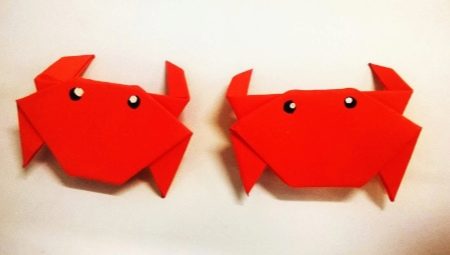
Origami is an unusual and amazing technique that is interesting not only for children, but also for adults... If you practice folding paper figures for a long enough time, in a short period of time you can learn how to fold even the most complex structures without difficulty. Beginners should start with simple models. A crab is a craft that even a child can make.
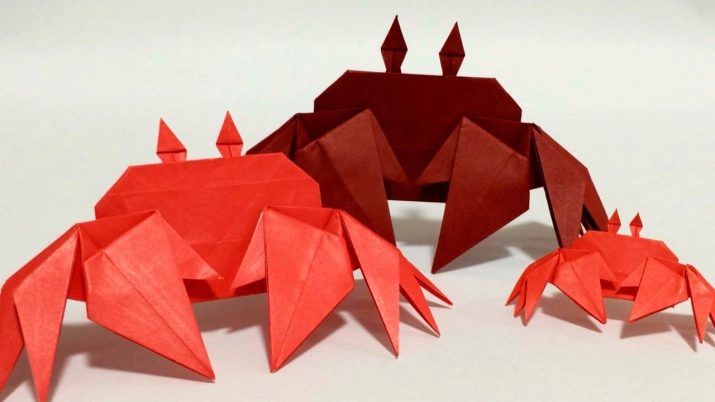
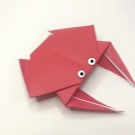
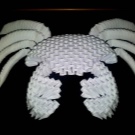
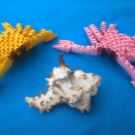
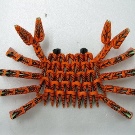
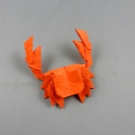
Simple options
Origami models, folding in a minimum number of steps, are recommended for children 7-9 years old. During folding, children will not get tired, their attention will be focused on the action throughout the entire process, and the result will be perfect. Simple crab creation schemes for beginners are ideal. You can make different figures, volumetric and for postcards.
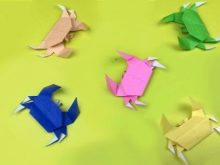
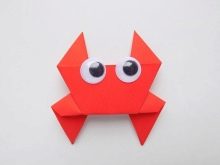
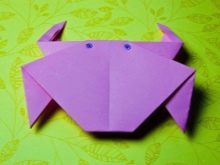
Scheme No. 1
Step-by-step instructions for assembling a wide-legged crab.
- A paper square 15x15 cm must be bent in half. The top edge should be perfectly aligned with the bottom edge. The workpiece must be turned so that the open edge "looks" at the person.
- The workpiece is folded in half again, but this time from right to left.
- The top pocket should be flattened and flattened. You should get a figure that resembles a triangle.
- The workpiece is turned over, step 3 is repeated on the back.
- The edges of the layer that is closer to the person are bent inward along the dotted line.
- The workpiece is turned over, the bottom corner is lifted in the direction of the arrow.
- The sides fold along the dotted lines.
- The figurine is turned over to face the person.
To make the crab look more impressive, you can complement it with toy eyes.
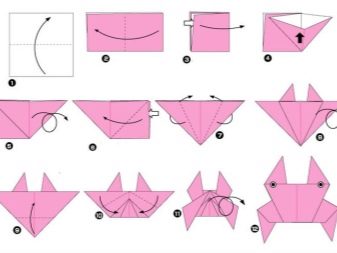
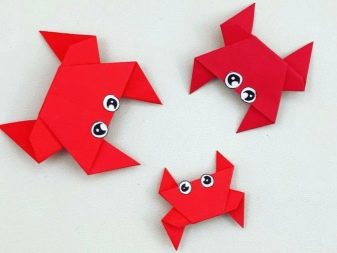
Scheme No. 2
The figurine is made using the basic shape with the poetic name "Catamaran". It looks a bit like the first model, but it needs to be folded differently.
- A sheet of paper in the shape of a square must be bent in half, marking the axes in the center. You should get two - vertical and horizontal. Then you should open the square.
- Both edges (left and right) fold in towards the middle to form "doors".
- The top and bottom halves fold towards the center. It is necessary to make marks and open the blank.
- Half of the top opens along the arrows and folds along the dotted line. It is carefully pressed and flattened neatly.
- You need to repeat step 4 and a half at the bottom. Now we have a basic shape.
- The corners of the half from above rise and fold along the lines.
- Parts on the side are folded along the fold lines, you need to focus on the arrows.
- Folds are formed, the corners go down.
- Often rises from below. The figurine turns over.
A beautiful crab is ready.
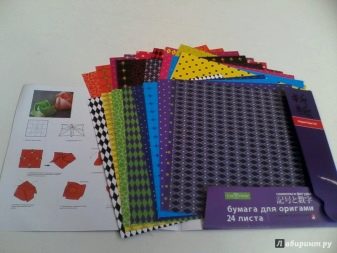
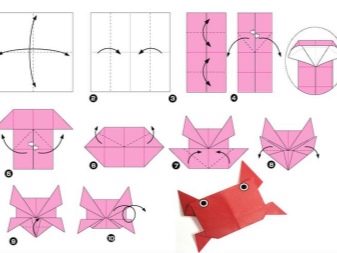
Scheme No. 3
Assembling a neat model with naturalistic claws is easy enough.
- The square marks the middle with a small fold.
- The material folds in the other direction.
- 1 layer is divided into several parts (3). It is important that they are equal. This part is folded back by 1/3.
- The edge on top goes down to the fold made in the third step.
- The edge at the bottom rises to the mark that can be seen in the detailed assembly diagram. Leave a gap between the edges.
- The right and left sides fold along the dotted line.
- The "pocket" unfolds neatly on the left (white arrow).
- The lower part of the valve descends towards the base.
- The corner is folded back.
- Steps 7-10 are repeated on the right side.
- Elements in the form of rectangles are folded diagonally at the top and expand.
- The corners are wound inward. For this, a reverse fold is used.
- The side flaps that protrude must be lowered and the finished figure turned over.
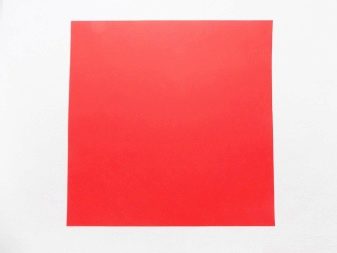
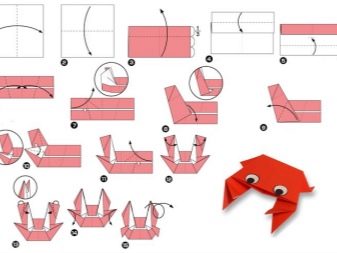
Scheme No. 4
A popular simple model that can be assembled based on the Double Triangle shape.
- The square folds in half vertically, then horizontally.
- The 1st layer is revealed inside, the workpiece is flattened and turned over.
- Step 2 is repeated on the other side.
- The 1st layer of the triangular blank is tucked inward along the dotted line.
- The top edge must be folded 1 cm.
- The figure turns over.
- Both sides (right and left) are folded in a line.
- The bottom corner should be bent.
- The finished craft is unfolded with the front side.
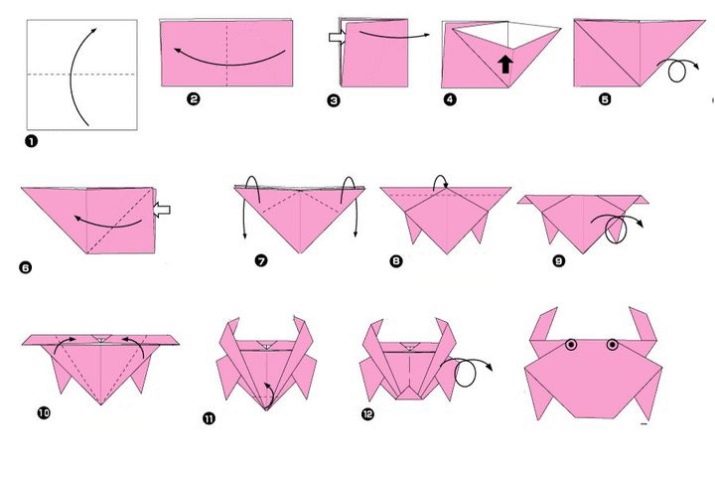
Experienced circuits
People who have made simple figures for a long time are able to create more complex crafts. This will help not only to have a pleasant free time, but also to develop this skill even more. Here are some step-by-step schemes for creating origami in the form of a crab for experienced people.
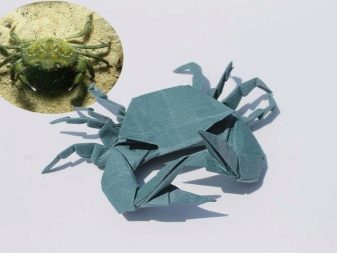
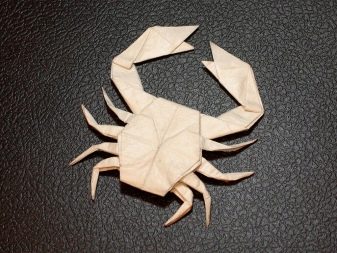
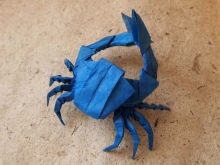
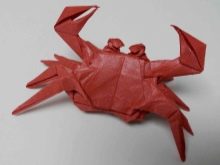
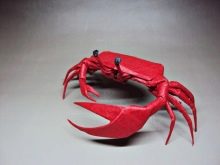
Sponge crab
To fold the original crab, prepare a 15x15 cm paper square.It is necessary to choose paper that is not too thick, otherwise the craft will not be neat. Folding starts from the wrong side.
- The material is folded in half along the dotted line, which can be seen in the diagram. Diagonals - "valley", central axes - "mountain".
- The folds open. The workpiece is assembled with the help of arrows in such a way that the base for the "Water Bomb" is formed.
- The triangular workpiece turns its base towards the person. The side on the left rises up, then gently folds down and folds along the dotted line.
- The 3rd step must be repeated on the right side.
- The right and left sides fold towards the center.
- The ends of the two flaps are folded back so that a straight line is formed.
- The valve drops from above along the dotted line.
- The leaves are translated over the triangle.
- You need to create a squash fold using the arrows.
- The 11th step is repeated on the right.
- The 1st layer of "squash" will blend to the side (thus the claw is indicated). The same must be done with the other side.
- The part is folded at the bottom.
- All valves open in the direction of the arrows.
- Folds are made to shape the eyes.
The finished figure is turned over to the front side.
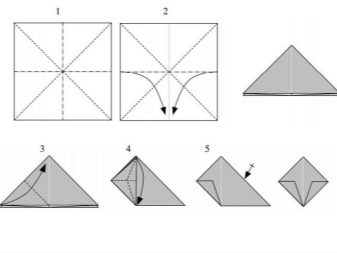
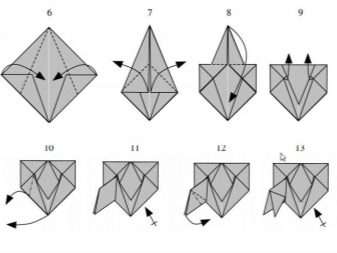
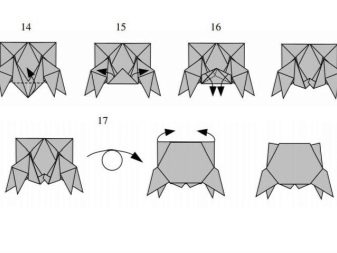
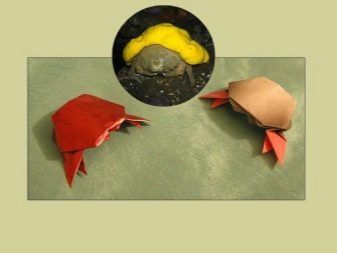
Violinist
If you follow the scheme and assemble the model sequentially, you can make an interesting figurine of a violin crab. It is best to use a printed material to give the craft a decorative look. It is based on the basic form "Pancake".
- It is necessary to divide a square sheet of paper 15x15 cm in half using the "valley", and then diagonally using the "mountain".
- After all the folds have been marked, the sheet should be opened.
- All corners are bent to the center.
- The workpiece is turned over.
- You need to fold the "Double Square" shape. Pull up the element indicated by the arrow. Then make a fold "valley" along the purple line.
- Press down on the protruding part. It is indicated by a small yellow arrow. Then it needs to be flattened.
- The edges fold to the center line along the dotted line.
- The folds from step 7 are revealed.
- It is necessary to pull the edge down (it is indicated by the arrow), in the process, bend the valve along the dotted line.
- The edges (arrows show on them) should be pressed and carefully smoothed.
- The bottom triangle shape needs to be lifted.
- Repeat steps 6-11 for the other 3 sections of the workpiece.
- The ends at the top stretch in the direction of the arrows.
- The triangles below the purple lines should be folded into the model.
- The ends indicated by the arrows are bent.
- Steps 13-15 are repeated for other sections.
- Details on both sides are shifted by means of the "valley" fold.
- The top layer of material is detached from the rest of the craft in the places indicated by the arrows.
- The workpiece is folded along the lines of purple, you need to use the "valley".
- The extra end goes up. Steps 17-20 are repeated for other parties.
- The pocket opens neatly.
- The protruding part is compressed.
- Repeat steps 21 and 22 on the other side.
- Both ends from above descend along the dotted lines.
- 2 folds are formed.
- By means of a reverse fold, you need to lower the beam from the top to the right, and then to the left.
- Repeat step 24 for the ends indicated in the diagram.
- The workpiece is turned over.
- At the end that is marked, folds are formed.
- The reverse fold is made along the lines in the diagram.
- The 2nd end is wound inside the workpiece and moves there.
- The edges are pressed according to the pattern. This will give the claws volume.
- The product is being turned over.
- Other legs are formed in the same way.
- The top folds over to fit the claws.
The lower triangular element folds over. The figure is ready.
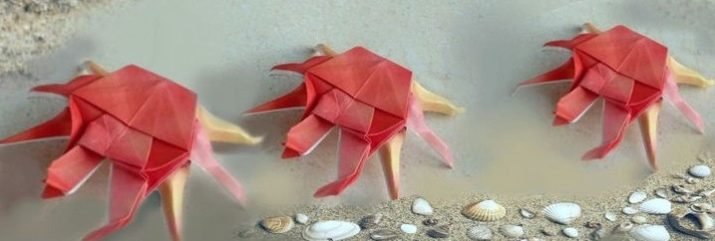

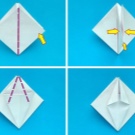
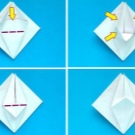
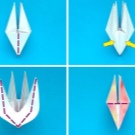
Creating a modular crab
Modular figures are incredibly beautiful and can be an interior decoration. It is quite difficult to make them, but if you constantly practice, assembling the modules and shapes will not take much time.
First you need to make modules from orange and brown A4 paper. Each sheet should be divided into 32 rectangles of the same size. It is necessary to bend the paper lengthwise, thereby making 4 strips. After each of the strips must be cut into 8 parts, which must be equal to each other. This gives the required number of rectangles with sides of about 3.5x5 cm. To assemble a modular figure, you will need 30 orange and 62 brown modules.
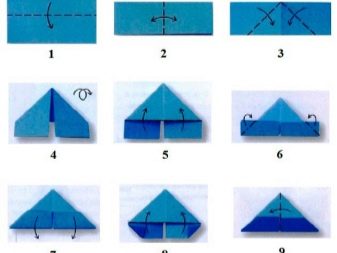
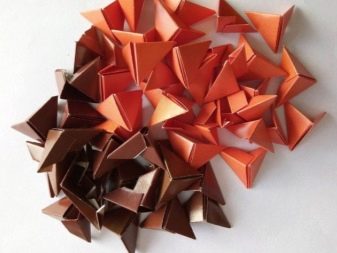
Folding scheme.
- To assemble the body, you need to put 5 brown modules on the surface of the workplace. They should be put on the short side, the "pockets" should "look" forward.
- All elements are connected in such a way that a "chain" is formed. This is done using the 2nd row of triangles, which are placed on a short side (6 modules). The 3rd row consists of 5 modules, the 4th - of 6, the 5th - of 5, 6th of 6, and the 7th (final) - of 5. The outermost elements should be brown, those that are inside - orange. In the final, you will get a blank body, on which there will be three open side elements.
- The limbs must be assembled using brown parts. We collect 6 paws by nesting modules into each other. Each of the paws is made from five triangles.
- The claws fold in the same way as the legs. Each of them has five triangles. 1 additional element is inserted into the base, which will allow you to attach the claws to the main element of the craft. Decorate the claws with 4 orange triangles.
- All items must be attached to the torso... Attach the feet first. For them, the open side elements were left. Additional elements on the front claws need to be pushed into the holes of the extreme elements on the body, and then the hind legs are built up (2 elements for each). The limbs should be slightly bent so that they are more stable.
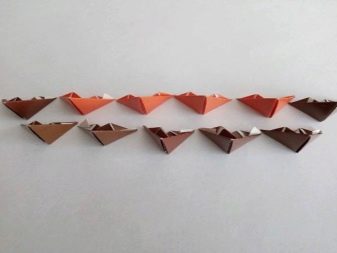
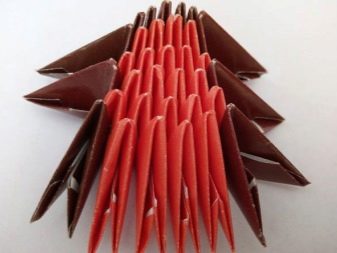
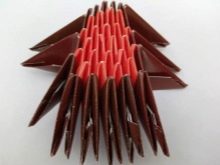
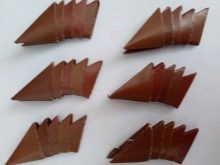
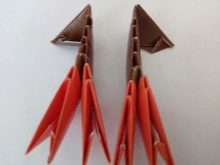
Eyes are cut out of paper and glued to the body. A beautiful crab is ready.
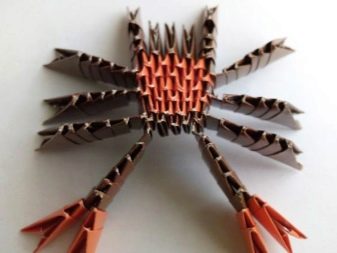
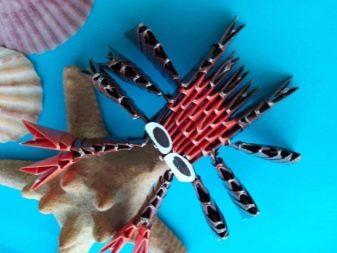
To learn how you can make origami in the form of a crab with your own hands, see the next video.








